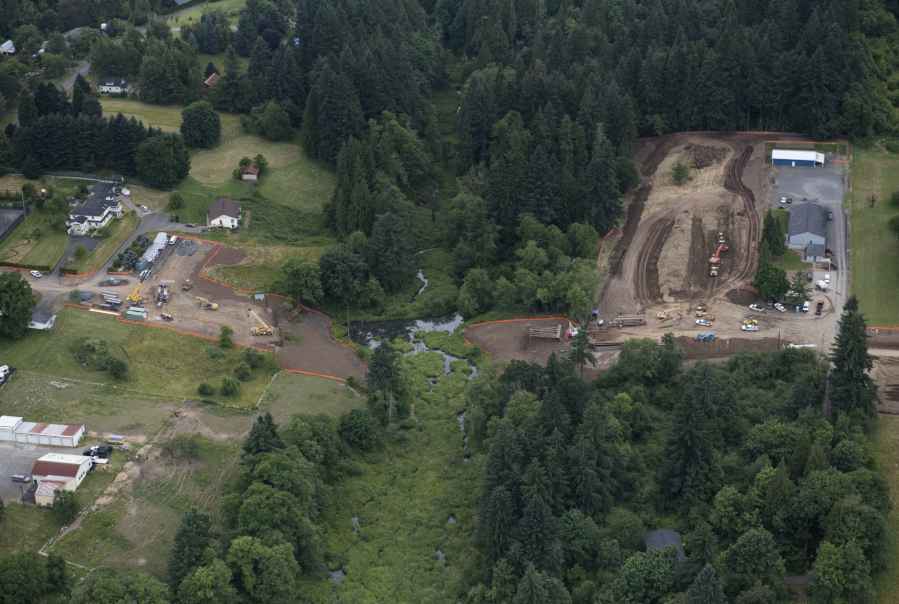The parking lots, subdivisions and roads that have sprung up in Clark County in recent decades put new pressures on local streams and the aquatic life they support.
Its up to state and local officials to balance the county’s continuing development with maintaining and improving the water quality of its small waterways.
Clark County recently finished a draft watershed-scale stormwater plan for Whipple Creek.
In compliance with its National Pollutant Discharge Elimination System Phase I Municipal stormwater permit, Clark County has to report to the Washington Department of Ecology what it would take for the creek to meet its designated uses, which includes salmon spawning, rearing and migration.
The report used computer modeling and simulations to calculate ways for meeting the state’s water quality standards.
“The purpose of a conceptual analysis is to provide models of what does and doesn’t work,” said Rod Swanson, a program manager for the Clark County Public Works Clean Water Division.
“The goal in the permit is to restore designated uses. Those aren’t necessarily things that are readily attainable,” Swanson said.
The creek’s 12 square-mile watershed drains out of the hills east of Interstate 5, near Washington State University Vancouver’s campus and into Lake River in the west. The watershed was once undeveloped forested land and wetlands, and later rural and agricultural lands, but in recent decades the land has been cleared for development.
Unlike the natural landscape, asphalt, concrete and roofs don’t allow water to soak into the soil and filter before entering the waterways. That inhibits overall watershed health.
As a result, Whipple Creek is hampered by high turbidity, low oxygen levels, high temperatures and traces of fecal coliform bacteria, according to a 2015 inventory done by Clark County. Those issues put stress on fish and other animals that live in the creek.
However, Swanson said the analysis reveals ways the county can move closer to the state’s requirements, by planting trees to shade and cool the creek, requiring low-impact development where it’s feasible and installing woody debris in the stream to slow the water flow.
The state’s other heavily populated counties, including King, Snohomish and Pierce are also required to file reports for their watersheds.
Rian Sallee, Ecology’s municipal stormwater permit implementation planner in the southwest region, will review the county’s document when they turn it in. She said stormwater pollution is a significant threat to water quality. But reports like the one the county is about to submit helps protect it in the long term.
“Drilling down to the local level and local conditions is of great benefit over the long term,” she said. “We can pinpoint issues in a given watershed to how best help it along.”
Sallee said she hasn’t seen the county’s report yet, but it appears the county will meet their upcoming deadline.




